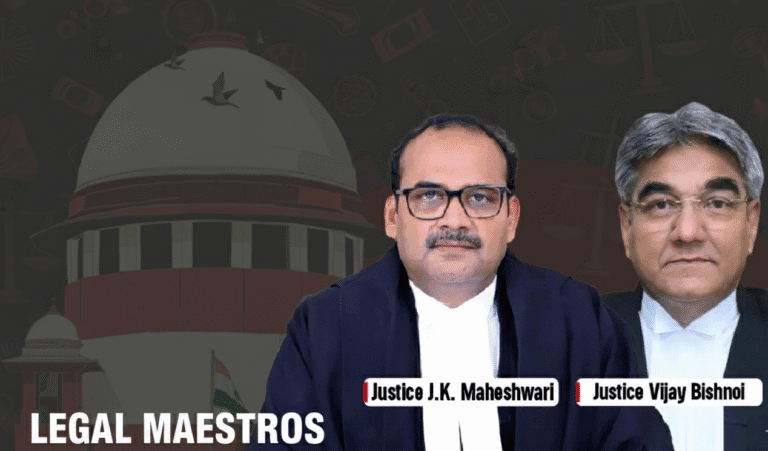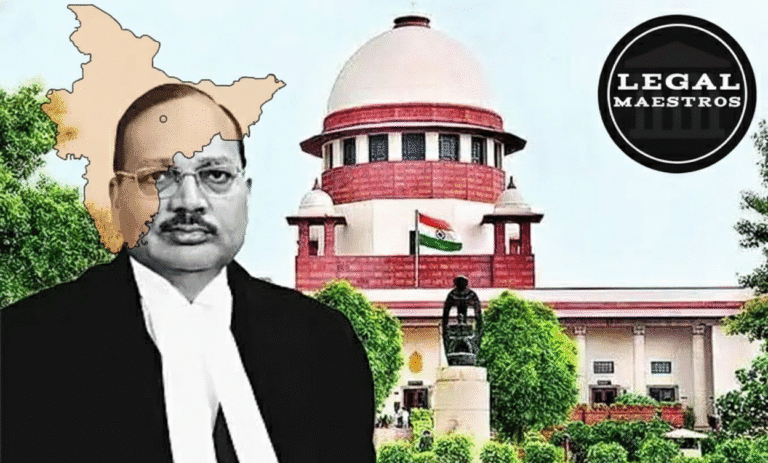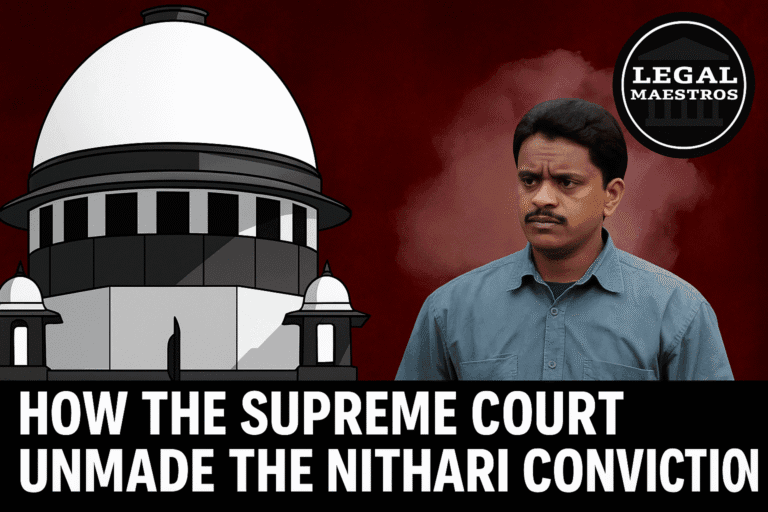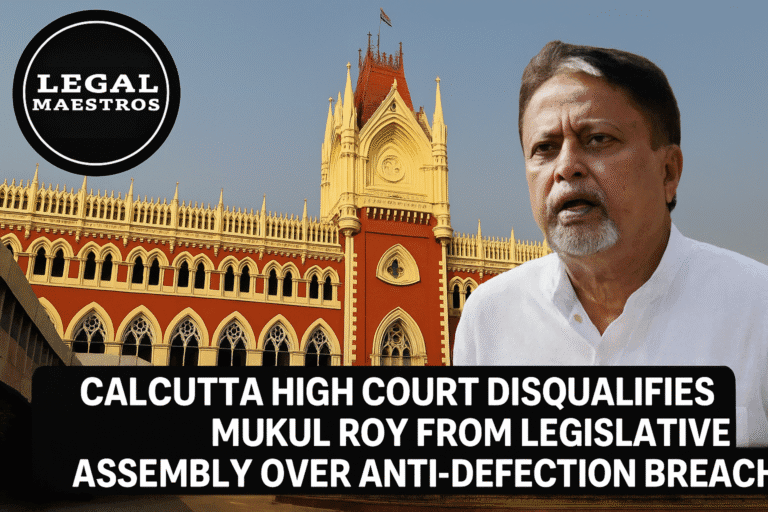
Supreme Court Led by Justice Bela M. Trivedi Protects Creditor Interests and Curtails Judicial Overreach in DHFL Resolution Plan Conflict
Introduction
In Civil Appeal Nos. 1632–1634 of 2022, which concerned the resolution of Dewan Housing Finance Corporation Limited (DHFL), a three-judge panel of the Supreme Court of India rendered a historic ruling on April 1, 2025 with regard to the case.
Whether or whether the National Company Law Appellate Tribunal (NCLAT) made the appropriate modifications to the Resolution Plan that was accepted by the Committee of Creditors (CoC) was the subject of the judgment that was written by Justice Bela M. Trivedi.
The decision of the Court elucidates aspects such as the scope of avoidance petitions under Section 66, the limitations of judicial involvement under Sections 30 and 31 of the Insolvency and Bankruptcy Code (IBC), and the preeminence of business sense when it comes to the actions of financial creditors.
For any queries or to publish an article or post or advertisement on our platform, do call at +91 6377460764 or email us at contact@legalmaestros.com.
Factual Background
Allegations of widespread fraud and poor management were made against DHFL, a non-banking financial business that is considered to be of systemic importance. The Reserve Bank of India dissolved its board of directors and began the bankruptcy process in accordance with the bankruptcy and Bankruptcy Code (IBC) in November of 2019.
Piramal Capital and Housing Finance Limited emerged as the Successful Resolution Applicant (SRA) after prolonged talks began after an Interim Resolution Professional requested bids for the position.
Their ultimate Resolution Plan intended to regard receivables from outstanding avoidance petitions under Section 66 of the Indian Business Code as belonging to the Securities and Exchange Board (SRA). This plan promised creditors a total of ₹37,250 crores.
For any queries or to publish an article or post or advertisement on our platform, do call at +91 6377460764 or email us at contact@legalmaestros.com.
For More Updates & Regular Notes Join Our Whats App Group (https://chat.whatsapp.com/DkucckgAEJbCtXwXr2yIt0) and Telegram Group ( https://t.me/legalmaestroeducators )
Procedural Journey and Appeals
Objections that Section 66 recovery should be to the advantage of all creditors were not accepted by the National Company Law Tribunal (NCLT) when it gave its approval to the Resolution Plan in June of 2021.
Dissatisfied creditors, most notably 63 Moons Technologies Limited, have filed appeals with the National Company Law Appellate Tribunal (NCLAT). The National Company Law Appellate Tribunal (NCLAT) issued a common ruling on January 27, 2022, stating that it had determined that the provision that granted Section 66 recovery to the SRA was in violation of the statutory scheme of the IBC.
For any queries or to publish an article or post or advertisement on our platform, do call at +91 6377460764 or email us at contact@legalmaestros.com.
These findings prompted the CoC to review the plan. A number of intervener creditors, together with Piramal Capital, subsequently filed an appeal with the Supreme Court in an effort to uphold the commercial judgment made by the Court of Appeals.
Statutory Framework under the IBC
At the outset of its investigation, the Supreme Court provided an explanation of the IBC’s goal, which was to provide a time-bound resolution procedure that maximized the value of the creditors. There is a requirement in Section 30(2) that a Resolution Plan shall “not contravene any of the provisions of law” and must prioritize the payment of insolvency fees and payments to creditors.
In accordance with Section 31, the Adjudicating Authority is granted the authority to provide approval to plans that satisfy these conditions. After the CoC, which is comprised of at least 66 percent of financial creditors based on their voting share, has given its approval to a plan, the Court highlighted that the CoC’s commercial acumen takes precedence, with just a few statutory grounds for judicial review being available.
For any queries or to publish an article or post or advertisement on our platform, do call at +91 6377460764 or email us at contact@legalmaestros.com.
Avoidance Applications and Section 66
An application to set aside advantageous, undervalued, and extortionate transactions may be submitted by the Resolution Professional in accordance with Chapter III of the IBC. With regard to fraudulent trade, Section 66 is specifically targeted.
Section 66 petitions that are successful often result in the funds being transferred to the estate of the corporate debtor for distribution in accordance with the plan.
As long as the CoC intentionally bargained off uncertain future recovery in exchange for a larger upfront offer, the Supreme Court decided that the requirement of the RFRP that prospective applicants attach a notional value to Section 66 claims did not, by itself, act as a violation of the scheme of the Code.
For any queries or to publish an article or post or advertisement on our platform, do call at +91 6377460764 or email us at contact@legalmaestros.com.
Judicial Review and Commercial Wisdom
The restricted extent of judicial review that may be applied to judgments made by the Court of Appeals was a fundamental aspect of the decision. Tribunals do not have the authority to re-examine the business merits of a plan or to second-guess concessions that have been struck since Sections 30 and 31 do not provide them that authority.
Intervening by the judiciary is limited to ensuring conformity with statutes, providing justice to creditors who disagree with the decision, and avoiding breaking the law. By isolating one commercial word and substituting its own notion of creditor advantage, the Supreme Court criticized the NCLAT for the fact that it had invaded the realm of the Court of Appeals.
It maintained that “commercial wisdom” is not susceptible to appellate nitpicking and that transactions that are accepted by qualified creditor majorities need respect in order to maintain consistency at all times.
For any queries or to publish an article or post or advertisement on our platform, do call at +91 6377460764 or email us at contact@legalmaestros.com.
Principle of Parity and Equity
Equally positioned creditors had authorized and executed the plan, and equivalent provisions had reached finality. The appellants also invoked the concept of parity as a possible explanation for their position.
It would be detrimental to the faith of creditors in the CoC process to deny Piramal Capital the benefits of its negotiated recovery, which would lead to inconsistencies. With the observation that equitable considerations necessitate the treatment of creditors in comparable circumstances in a consistent manner, the Supreme Court agreed with this line of reasoning.
Section 238 and Statutory Overrides
The judgement addressed issues that were raised in accordance with Section 238, which protects the IBC from potentially conflicting with other laws. Opponents contended that the National Housing Bank Act and the Reserve Bank of India Act, which are regulations that oversee housing finance firms and banks, impose more stringent protections for depositors than the proposed legislation does.
For any queries or to publish an article or post or advertisement on our platform, do call at +91 6377460764 or email us at contact@legalmaestros.com.
The Court came to the conclusion that once the CoC gives its approval to a plan that is in accordance with the IBC, the plan’s binding force extends to all stakeholders, including statutory creditors. To guarantee that the IBC’s resolution architecture takes precedence over external regulatory schemes, Section 238 contains a language known as the non-obstante clause.
Preservation of Creditor Value
Furthermore, the Supreme Court emphasized the IBC’s guiding principle, which states that time is of the importance and that resolution strategies should maximize value. It would be counterproductive to the Code’s mission to engage in never-ending litigation over particular plan clauses. Protection of creditor expectations and encouragement of competitive bidding were both outcomes of the Court’s decision to validate the treatment of Section 66 recovery as a commercial agreement.
Speculating on the outcomes of negotiated trade-offs would discourage participation and put future settlement procedures in jeopardy, according to the warning.
For any queries or to publish an article or post or advertisement on our platform, do call at +91 6377460764 or email us at contact@legalmaestros.com.
Directions and Disposition
The ruling of the NCLAT that required the plan to be reconsidered was overturned by the Supreme Court, which allowed the appeals by default. The resolution plan proposed by Piramal Capital was reaffirmed by the NCLT as having been approved in its first form without any modifications.
Keeping in mind that the distribution of successful recovery must adhere to the framework that was established, the court sent any outstanding avoidance motions to the National Company Law Tribunal (NCLT) for adjudication in line with the conditions of the plan. After discarding all of the applications that were linked to the judgment, the decision was deemed to be final.
For any queries or to publish an article or post or advertisement on our platform, do call at +91 6377460764 or email us at contact@legalmaestros.com.
Impact on Insolvency Jurisprudence
This verdict represents a significant turning point in the landscape of bankruptcy in India. It is made clear that plans that have been authorized by the CoC are afforded substantial protection against judicial intervention, provided that they meet with the obligations that are mandated by statute.
Both the economic orientation of the Code and the notion that stakeholders should share the rewards or responsibilities of negotiated agreements are strengthened as a result of this judgment. The future resolution professionals and RAs will be able to go forward with a higher degree of assurance that the terms representing the consensus of the CoC will be able to survive the examination of the appeal court.
Conclusion
This balance between judicial control and creditor sovereignty is reaffirmed by the Supreme Court’s decision in the DHFL case, which was handed down by the IBC. The Court has offered definite guidance on the boundaries of judicial review and the sanctity of decisions made by the Chamber of Commerce by outlining the outlines of Section 30, Section 31, Section 66, and Section 238.
For any queries or to publish an article or post or advertisement on our platform, do call at +91 6377460764 or email us at contact@legalmaestros.com.
By guaranteeing that time-bound remedies continue on the ground of business negotiations rather than prolonged litigation, the ruling would not only improve trust in India’s bankruptcy process, but it will also ensure that the regime is more effective.






![Research Assistantship @ Sahibnoor Singh Sindhu, [Remote; Stipend of Rs. 7.5k; Dec 2025 & Jan 2026]: Apply by Nov 14, 2025!](https://legalmaestros.com/wp-content/uploads/2025/11/Gemini_Generated_Image_s0k4u6s0k4u6s0k4-768x707.png)
![Karanjawala & Co Hiring Freshers for Legal Counsel [Immediate Joining; Full Time Position in Delhi]: Apply Now!](https://legalmaestros.com/wp-content/uploads/2025/11/Gemini_Generated_Image_52f8mg52f8mg52f8-768x711.png)